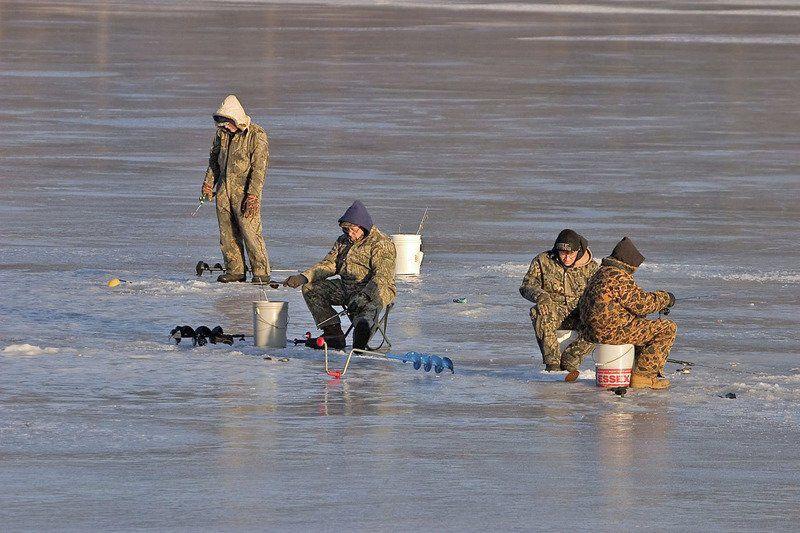
A trail of auger holes in the Mississippi River ice maps the travels of hardy winter anglers that are in pursuit of that elusive big fish. Ice depth in the river determines how far winter anglers can safely travel to pursue their sport. So where do fish go in winter?
We are fortunate to have a premier Mississippi River fishery research facility nearby at the Iowa Department of Natural Resources Bellevue Fisheries Station located south of Bellevue. The research station has been mapping fish travels in summer and winter since the 1970s. Although personnel have changed over the years, the goal of improving fishing on the Upper Mississippi River has remained a priority.
Kirk Hansen, a fisheries research biologist, provided insight into some of their projects: “Since the 1980’s, much research has gone into learning the habits and habitats of various fish species including walleye, sauger, largemouth bass, bluegill, crappie, and northern pike. Radio transmitters have been attached or implanted into the fish and they are tracked to learn what habitats they use at different times of the year. When a fish is located, a suite of water quality measurements are taken including depth, flow, temperature, and dissolved oxygen. Taking these measurements over several years from numerous fish has identified habitat preferences and defined general movement trends for different species.”
Kirk added, “One such trend is the movement of bluegill, crappie, and bass to specific areas during the winter. As the water temperatures cool below 50 degrees in the fall, these fish begin moving toward and into specific off-channel areas and backwater lakes to spend the winter. By the time ice forms, all the fish are in these areas. These areas have no water flow, depths of 3 feet or greater, water temperatures around 3 degrees above freezing (main channel water temperatures are around 32), and maintain good oxygen levels throughout the winter. These backwaters are no secret to local anglers and support ice fisheries throughout the winter. Top areas include Rock Creek in Pool 14 and Potter’s Marsh, Spring Lake, South Sabula Lake, and Brown’s Lake in Pool 13.”
Long periods of ice and snow cover are harsh on fish because they prevent the mixing of oxygen into the water column or freeze the column entirely. Low oxygen levels cause fish to seek deeper water to survive. A major component of the Beaver Island Habitat Restoration Project is to provide deep water for fish survival in winter.
Many backwaters in our area have a water depth of only a few feet. Ice thickness during the January cold period reached 12 inches in the backwaters and 6 inches in main channel areas of the river above Clinton.
In a large system like the Mississippi River, the impact of a winter kill on the fishery resource is usually not significant. Some riverine species, such as gizzard shad, incur massive die-offs each year, especially in young of the year and yearling fish. On smaller systems, such as inland lakes and ponds, a large percentage of many fish species may be killed during winter. In this case, fish stocking and a long period of population recovery may be needed.
Frigid temperatures in early January were a challenge to winter anglers. The current warming trend may result in unsafe ice conditions. Be aware of ice depth and especially underwater flows so that a tragic accident doesn’t prevent you from going home to your family tonight.
Ed Britton is a wildlife refuge manager at the Upper Mississippi River National Wildlife & Fish Refuge and a volunteer at the Bickelhaupt Arboretum.
http://www.clintonherald.com/news/local_news/where-do-fish-go-in-the-winter-time/article_da36c7e7-ef4f-5096-9f57-8aff6d9a0d80.htmlBagikan Berita Ini














0 Response to "Where do fish go in the winter time?"
Post a Comment